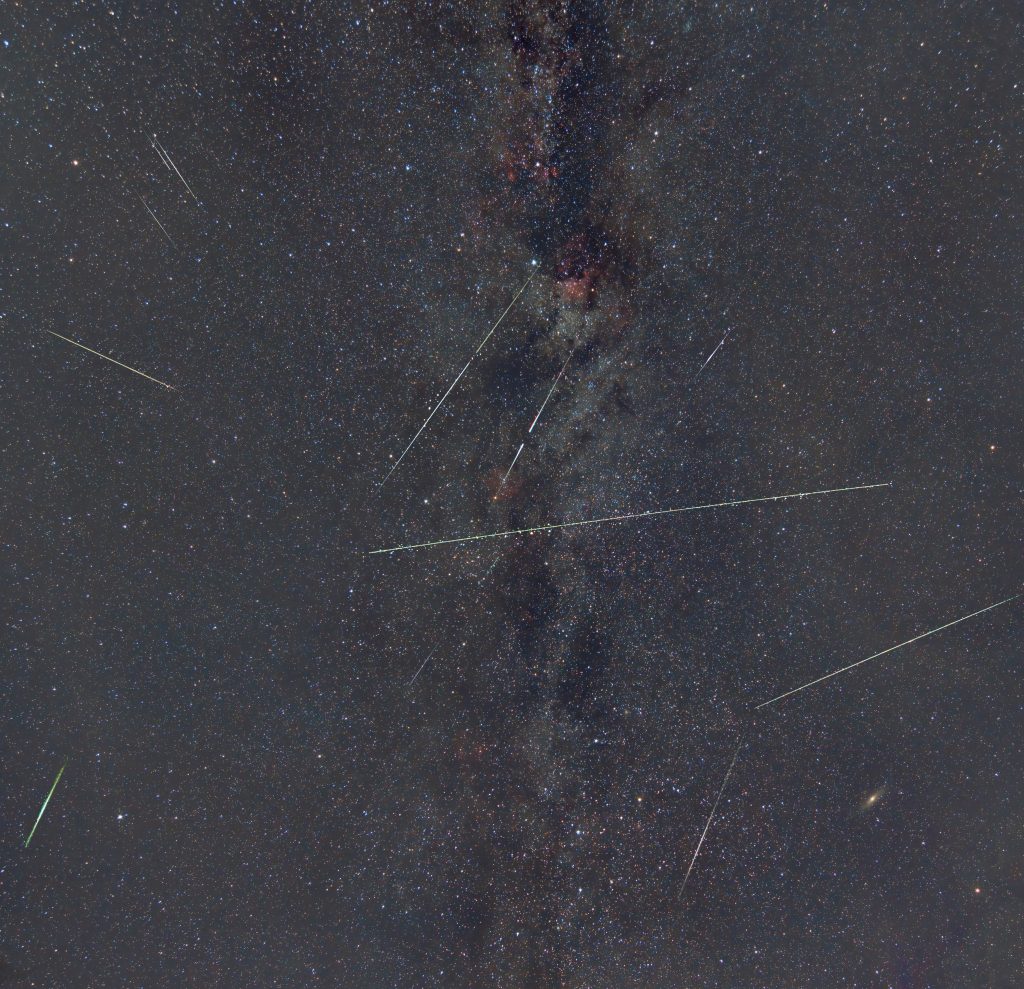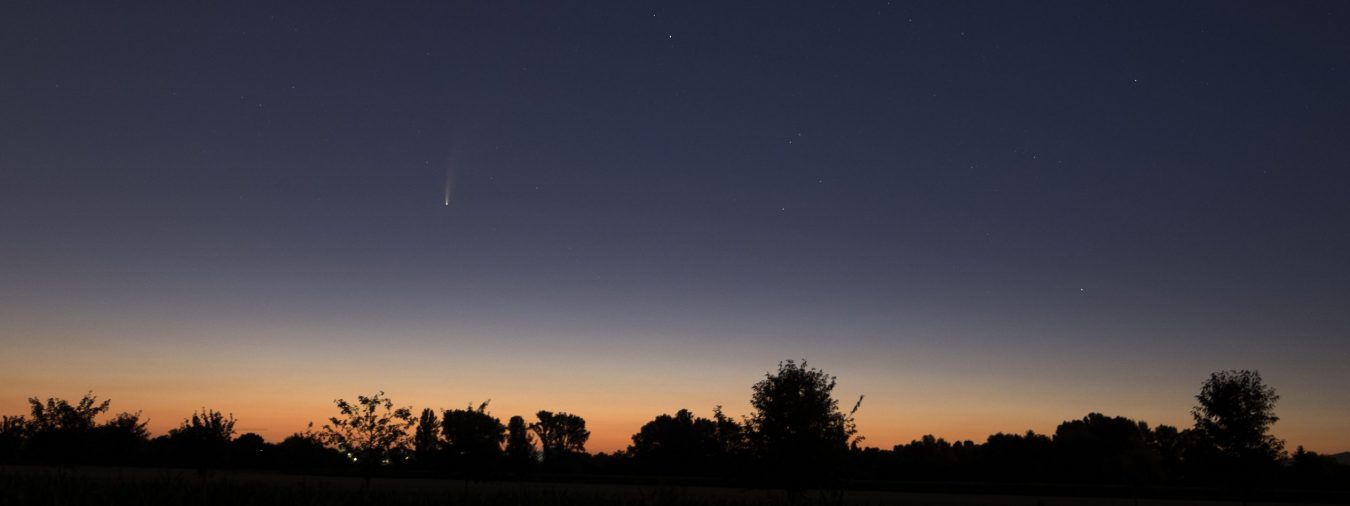
Every year in August, the most famous shooting stars flit across our night sky. The Perseids are named after their apparent origin, the constellation Perseus. They originate from comet 109P/Swift-Tuttle, which orbits the sun every 133 years and leaves a trail of dust through which the earth flies once a year. These dust particles evaporate when they enter our atmosphere at an altitude of around 100 kilometres and ionise air molecules, which can then glow greenish. The comet has repeatedly left dust behind during its many orbits around the sun, so that its shooting stars can be seen over an unusually long period in July and August. The maximum is typically on 12 or 13 August. This year for us it was in the early morning of 13 August. This means that our best viewing time is in the early morning just before sunrise. Shooting stars are best observed in low-light and dark regions, but you can see the brightest ones from the dark garden or even when travelling.
My photos were taken in the nights around the maximum, due to rain or cloud cover only in the late evening hours. Nevertheless, 12 of my 500 photos show wonderfully glowing green Perseids. They are shown here together in one image. In addition to the Milky Way, you can also clearly recognise the yellow glowing Andromeda galaxy at the bottom right and red glowing nebulae in the Milky Way, such as the North America and Elephant Trunk Nebulae.
